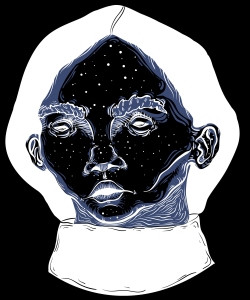As I enter the British Library I already see the Alice in Wonderland exhibition. I enjoyed the graphic design, especially the design of the title. In comparison with the 2010 Alice in Wonderland movie the visual representation came across quite poor. I hoped for something breath taking.
One was able to enter the exhibition from several sides which was confusing since the graphic design was suggesting to use the entrance pointed towards the side but the front entrance looked like the main entrance. So I entered from the front. Mirrors were located in front of the exhibition beautifully printed with Alice in Wonderland illustrations. The mirrors were slightly distorted but not as much as you would expect for a story like Alice in wonderland. Props, books and other items were exhibited. The props were wonderfully made, it would have been nice to see more of them. Descriptions of the work and the people involved were printed on the walls. The space where they chose to locate the alice in wonderland exhibition was poorly chosen. Especially in comparison to the Tin Tin exhibition in Somerset House it was disappointing. Alice in wonderland is such an amazing story which the exhibition failed dot bring across.
The chosen place inside the British library was very open which didn’t compliment the concept of the story. Alice was trapped in a different dimension\world in the book, this should have been communicated through this exhibition. I was missing the feeling of curiosity and surprise. When walking through the exhibition the entrance of the library was visible. To encase the viewer in the world of alice. A good example of the potential of such exhibition would be the alexander mcqeeun exhibition in the V&A. The graphic design of the exhibition was my favorite part. The curation and the limitations which I’m sure the library set for the exhibition held the creatives back. I especially liked the little arrows leading the way through the exhibition which made you feel like you are actually in alice in wonderland, but also the exhibition poster was very well done. It was a big tag where the exhibition name was written on very beautifully. One of the enjoyable aspects was the puzzle where you had to place about 10 images in the right order which tells the story of alice in wonderland. It was very entertaining and fun.
Overall the exhibition could have been executed better but it would still be worth going just because of the items they chose to exhibit.
Alice Through the Looking Glass
Have a look:





